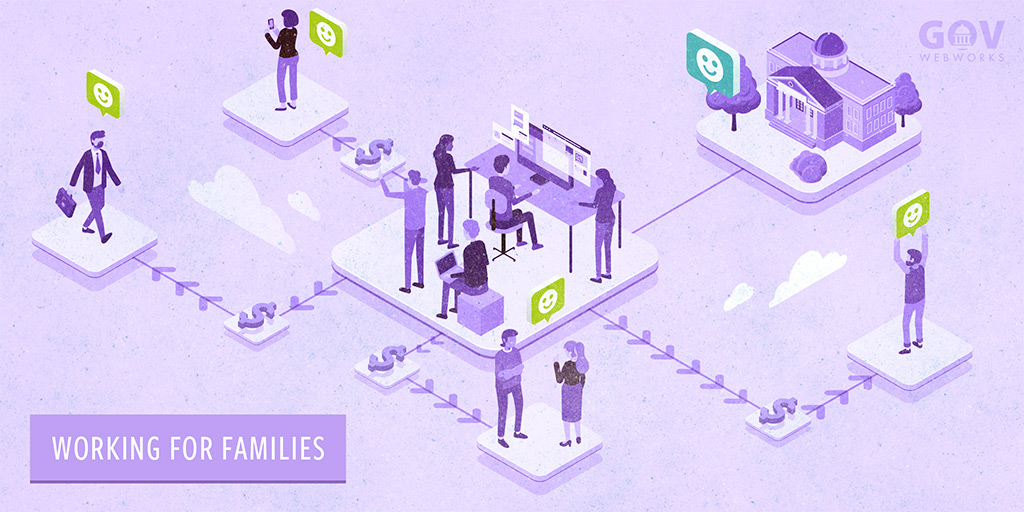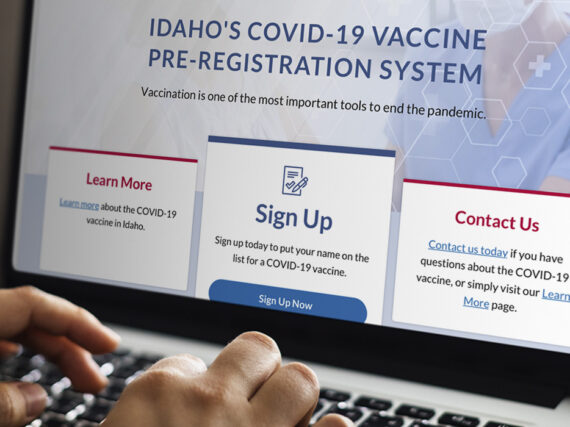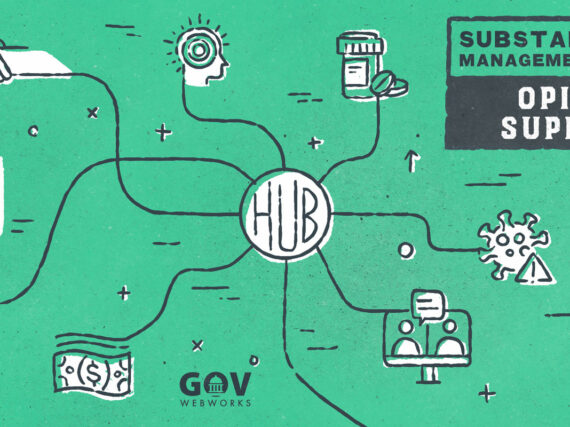In our last post on Support for Changing Families, we talked about the value of updating child support systems. They are especially vital for accurately reporting payment and enforcement activities in a timely manner. After all, a big part of any child support agency’s mission is the collection of payments to help support custodial parents and reduce the risk of leaning on other programs. Child support systems can spot where payments are falling short, and thereby highlight parents who may need additional services to become compliant.
In an Our American States (OAS) podcast from the National Conference of State Legislatures, host Gene Rose explored two programs that are focusing on supporting non-custodial parents, particularly in the area of employment, as they look to improve payment levels.
Breaking down barriers to payment
Experts say parents who willfully refuse to pay child support are the minority. More often than not, the parent wants to pay, but is facing challenges getting and keeping a job. This problem is exacerbated when the parent has a criminal history, with the state of Colorado estimating that a parent is 86% less likely to pay child support if they have a felony conviction.
Currently a lot of an agency’s energy goes towards working with non-custodial parents to meet their payment obligations. Sometimes this involves punitive measures like driver’s license suspension or tax refund intercept, but these measures can only go so far if the parent has no capacity to pay.
To address these issues, the Colorado Parent Employment Project (mentioned in the OAS podcast) is a trial project funded by an Office of Child Support Enforcement non-custodial employment demonstration grant. The state established a group of parents to receive “enhanced services”, which included:
- Fast-track review of enforcement orders to ensure they aligned with the parent’s ability to pay
- Fatherhood support groups for sharing challenges and positive outcomes
- Access to mediators to establish parenting time (since parents who have a relationship with their children are much more likely to pay support)
- Connection to workforce centers and other employment resources who have particular experience training and placing people with a criminal history
- Work support funding to pay for tools or equipment need to work
Within six months, 65 percent of parents enrolled in the program had found full time employment and were paying their child support (having previously not paid any support).
Support for self-employed parents
Self employment can pose another challenge to consistent child support payments. The Texas Noncustodial Parent Choices (NCP) program, also featured in the podcast, follows a similar approach to Colorado in focusing efforts towards sustainable employment for those who owe support. In many cases, these are parents who are intermittently self-employed and as a result have had an unstable work history, with little documented income. The NCP Choices program works with these parents to evaluate their skills and experience and translate these into attainable career pathways.
The program also works closely with the Title IV-D courts system to monitor the effort that parents are putting into their program, and ensure they are still held accountable through sanctions as necessary.
In terms of results, NCP Choices saw $6 million of support collected in 2018 from the approximately 4,500 parents enrolled. All that from a population that, prior to enrollment, had averaged six months without payment. In our last article we mentioned that nationally every $1 spent on enforcement returns $5.26 in support payments, and by comparison the NCP Choices program returned $8 for every dollar spent.
Combining resources for better results
Clearly these programs are yielding dramatic results, but one of the challenges for child support agencies can be securing funding to establish similar support structures. As Larry Fabian, Director of the Colorado Division of Child Support Services, points out, funding may be more abundant than it seems. “Many states have TANF block grant reserves where these funds would be available for creating these types of programs within a specific state,” he notes. “Every state also earns federal child support incentives based upon performance levels, and those dollars are available to fund this as well.”
Noelita Lugo, the assistant deputy director of field initiatives for the Child Support Division of the Office of Attorney General in Texas, also stresses that agencies should not try to duplicate skills and services already offered by the state. Instead, they can lean on existing workforce development resources to provide counseling.
There are already many programs that support employment development. Online solutions like the CareerForce platform from the state of Minnesota provide a host of tools for skills assessment and career matching, as well as specific assistance for previously incarcerated job seekers. The platform is also the front-door to the state’s workforce development network, connecting people with in-person counseling and support via workforce centers or local community partners.
Connecting child support programs with workforce development counterparts can go a long way toward growing results.
In summary
As we see in these examples, investment in richer support programs is yielding benefits in terms of compliance and collection. And better compliance helps lift so many children out of poverty. We’ve talked in the past about social determinants and the connection between work and health in From Single Cause to Macro Solution. We also looked at how proper counseling yields better results for long-term, sustainable employment in How Software Supports Welfare-to-Work Options. The takeaway: agencies that engage with support programs are having a broader positive impact in their communities.
As Larry Fabian says in the OAS podcast, “This really is an anti-poverty program. Doing this additional navigation and connecting parents to resources is an absolute game changer for families.”
See the first post, Support for Changing Families, for more on how the Child Support Enforcement (CSE) system encourages parental responsibility.
Learn more
- To learn more about our work in child support or workforce development, please get in touch
- Colorado emerges as national model by helping rather than pursuing parents who miss child care payments, Denver Post
- Engaging Fathers in Child Support: From a Punitive to Supportive Approach, Colorado Parent Employment Program
- Three Innovative Approaches to Serving Low-Income Fathers: The Building Bridges and Bonds (B3) Study, MRDC
Author bio
Tom Lovering is the Director of Client Engagement at GovWebworks, and has worked for the parent company, Portland Webworks, since 2008.







